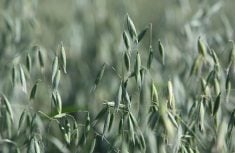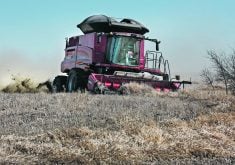Water a limit for pasture
Cattle producers know the amount and quality of grass in their pasture is one of the factors limiting their carrying capacity. A factor that is often ignored, however, is an adequate supply of high-quality water, said Bob Drysdale, with Saskatchewan Agriculture.
Water is one of the five nutrients needed for survival. Cattle with restricted access to water will reduce their feed intake, which reduces milk production and growth. It also decreases the weight of calves weaned and sold in the fall.
Read Also

VIDEO: Green Lightning and Nytro Ag win sustainability innovation award
Nytro Ag Corp and Green Lightning recieved an innovation award at Ag in Motion 2025 for the Green Lightning Nitrogen Machine, which converts atmospheric nitrogen into a plant-usable form.
“But a cow’s water requirements are difficult to determine,” said John McKinnon, Saskatchewan beef industry chair at the University of Saskatchewan.
“The daily intake varies a great deal, and depends on several factors.”
Young calves have a high water requirement because they are actively growing and forming tissues with a high-water content. Muscle tissue, a large part of the growth of calves, is about 72 percent water.
The daily water needs of a cow will depend on her stage of production. Milk is 87 percent water, so lactation will increase water needs. About 4.54 litres of water is needed to produce 4.53 kilograms of milk. This amount is in addition to the cow’s basic daily requirement, which ranges from 31 to 54 litres.
“Temperature and environmental conditions also determine water needs. When temperatures are in excess of 28¡ to 30¡, water consumption can increase dramatically,” he said.
Compounding the effects of temperature are wind, limited access to shade, and excess physical activities involved with grazing, breeding or drinking. This stresses the animal and increases the evaporative heat loss, which may even double the water needs. Failure to meet these needs can result in poor gains and reproductive performance on pastures, said McKinnon.
Water requirements can be met in ways other than just drinking. Lush pasture growth will have a moisture content of 70 percent or more, which may provide grazing animals with 18 to 22 litres of water, depending on intake.
In contrast, feed such as dry pasture, straw, hay or grain have relatively low moisture levels — eight to 12 percent — and animals consuming these feeds will have to drink more water than those on high-moisture feeds.
Water quality is just as important as quantity. Water with high mineral levels can increase problems with trace mineral deficiencies in the herd, or result in diarrhea in calves and generalized poor performance in the herd.
Contamination of surface water from industrial and farm chemical runoff, and pollution from human and livestock waste can also cause problems. Dugouts are also subject to the growth of blue-green algae. Specific strains can kill cattle.
- Saskatchewan Agriculture
















